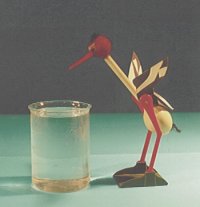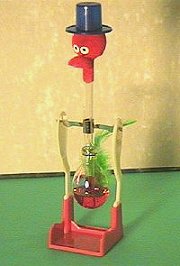The duck is composed of two spherical cavities joined by a tube which starts in the neck of the puppet and goes on inside the lower cavity quite until the bottom. The object can rotate on an horizontal axis set about in the middle of the cavities. The lower cavity contains a very volatile liquid with a tension of steam which is strongly correlated with temperature; the higher cavity, the "head" of the duck, is coated by felt that can absorb water.

|



